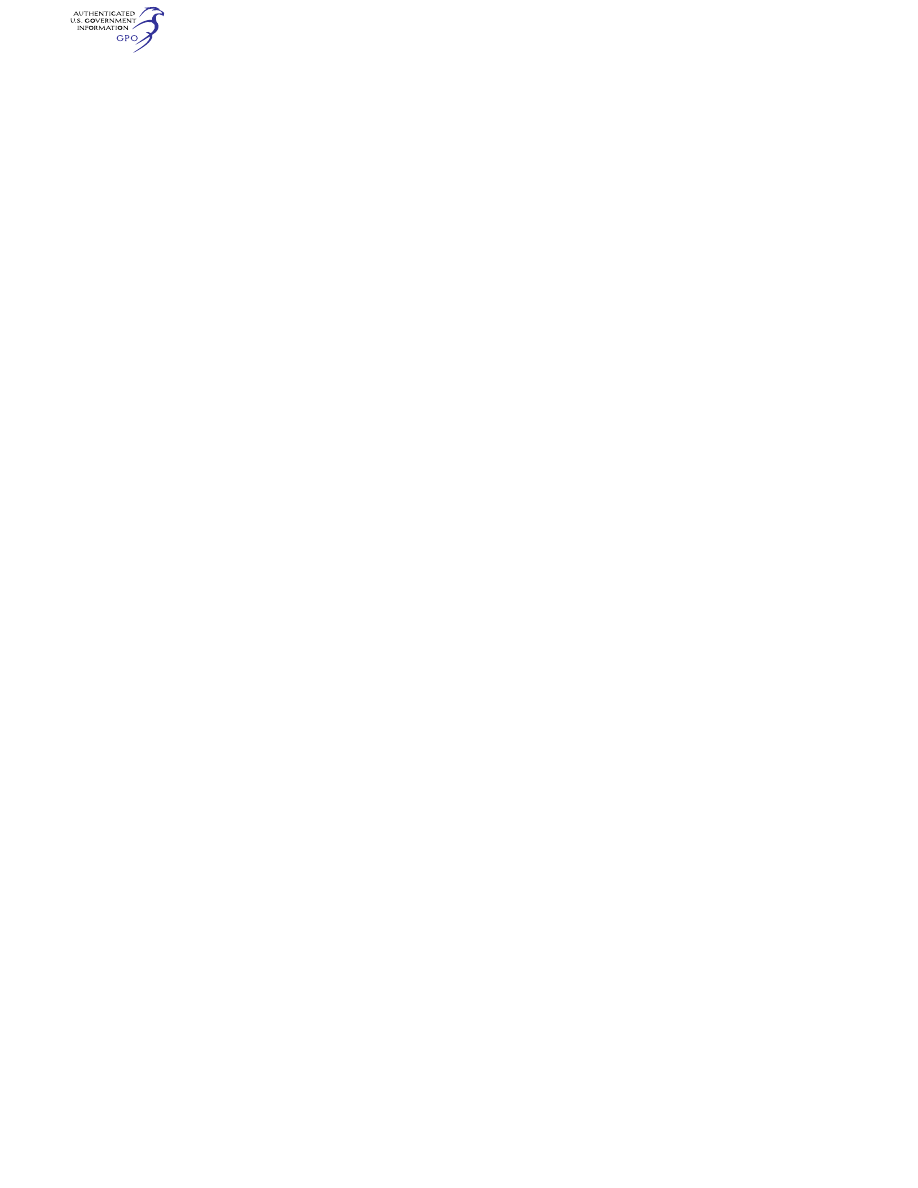
676
14 CFR Ch. I (1–1–24 Edition)
§ 29.1557
adjacent to, the selector for those
tanks; and
(3) Each valve control for any engine
of a multiengine rotorcraft must be
marked to indicate the position cor-
responding to each engine controlled.
(c) Usable fuel capacity must be
marked as follows:
(1) For fuel systems having no selec-
tor controls, the usable fuel capacity of
the system must be indicated at the
fuel quantity indicator unless it is:
(i) Provided by another system or
equipment readily accessible to the
pilot; and
(ii) Contained in the limitations sec-
tion of the rotorcraft flight manual.
(2) For fuel systems having selector
controls, the usable fuel capacity
available at each selector control posi-
tion must be indicated near the selec-
tor control.
(d) For accessory, auxiliary, and
emergency controls—
(1) Each essential visual position in-
dicator, such as those showing rotor
pitch or landing gear position, must be
marked so that each crewmember can
determine at any time the position of
the unit to which it relates; and
(2) Each emergency control must be
red and must be marked as to method
of operation.
(e) For rotorcraft incorporating re-
tractable landing gear, the maximum
landing gear operating speed must be
displayed in clear view of the pilot.
[Doc. No. 5084, 29 FR 16150, Dec. 3, 1964, as
amended by Amdt. 29–12, 41 FR 55474, Dec. 20,
1976; Amdt. 29–24, 49 FR 44440, Nov. 6, 1984;
Amdt. 29–59, 88 FR 8740, Feb. 10, 2023]
§ 29.1557
Miscellaneous markings and
placards.
(a)
Baggage and cargo compartments,
and ballast location. Each baggage and
cargo compartment, and each ballast
location must have a placard stating
any limitations on contents, including
weight, that are necessary under the
loading requirements.
(b)
Seats. If the maximum allowable
weight to be carried in a seat is less
than 170 pounds, a placard stating the
lesser weight must be permanently at-
tached to the seat structure.
(c)
Fuel and oil filler openings. The fol-
lowing apply:
(1) Fuel filler openings must be
marked at or near the filler cover
with—
(i) The word ‘‘fuel’’;
(ii) For reciprocating engine powered
rotorcraft, the minimum fuel grade;
(iii) For turbine-engine-powered
rotorcraft, the permissible fuel des-
ignations, except that if impractical,
this information may be included in
the rotorcraft flight manual, and the
fuel filler may be marked with an ap-
propriate reference to the flight man-
ual; and
(iv) For pressure fueling systems, the
maximum permissible fueling supply
pressure and the maximum permissible
defueling pressure.
(2) Oil filler openings must be
marked at or near the filler cover with
the word ‘‘oil’’.
(d)
Emergency exit placards. Each
placard and operating control for each
emergency exit must differ in color
from the surrounding fuselage surface
as prescribed in § 29.811(f)(2). A placard
must be near each emergency exit con-
trol and must clearly indicate the loca-
tion of that exit and its method of op-
eration.
[Doc. No. 5084, 29 FR 16150, Dec. 3, 1964, as
amended by Amdt. 29–3, 33 FR 971, Jan. 26,
1968; Amdt. 29–12, 41 FR 55474, Dec. 20, 1976;
Amdt. 29–26, 53 FR 34220, Sept. 2, 1988; Amdt.
29–58, 87 FR 75711, Dec. 9, 2022]
§ 29.1559
Limitations placard.
There must be a placard in clear view
of the pilot that specifies the kinds of
operations (VFR, IFR, day, night, or
icing) for which the rotorcraft is ap-
proved.
[Amdt. 29–24, 49 FR 44440, Nov. 6, 1984]
§ 29.1561
Safety equipment.
(a) Each safety equipment control to
be operated by the crew in emergency,
such as controls for automatic liferaft
releases, must be plainly marked as to
its method of operation.
(b) Each location, such as a locker or
compartment, that carries any fire ex-
tinguishing, signaling, or other life
saving equipment, must be so marked.
(c) Stowage provisions for required
emergency equipment must be con-
spicuously marked to identify the con-
tents and facilitate removal of the
equipment.
VerDate Sep<11>2014
09:06 Jun 28, 2024
Jkt 262046
PO 00000
Frm 00686
Fmt 8010
Sfmt 8010
Y:\SGML\262046.XXX
262046
jspears on DSK121TN23PROD with CFR
